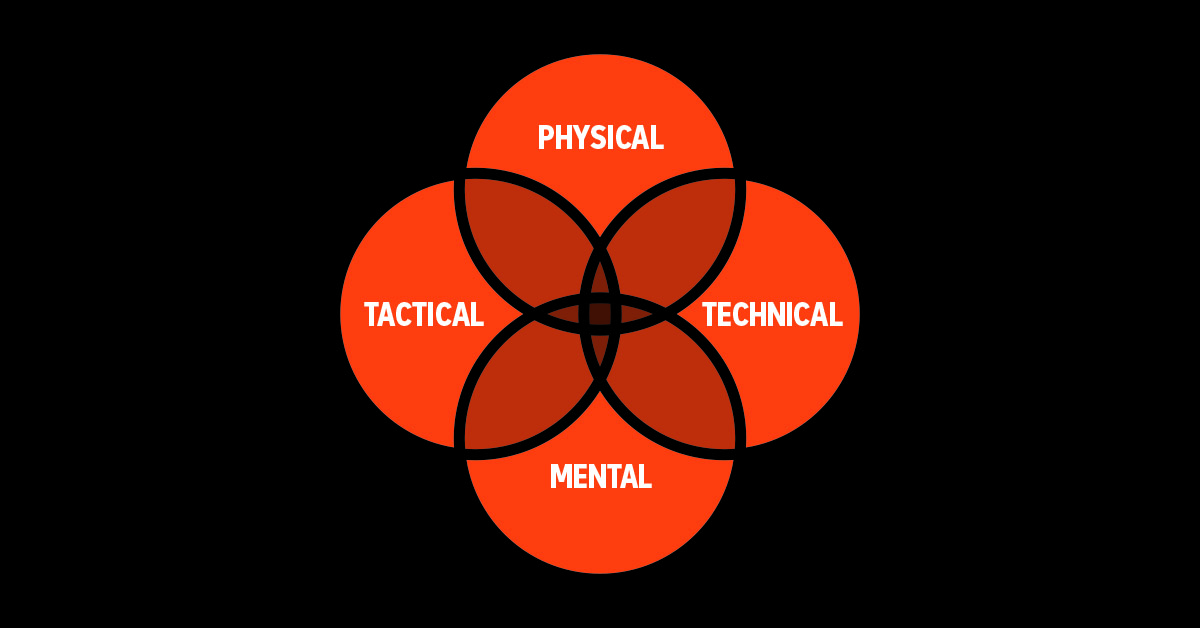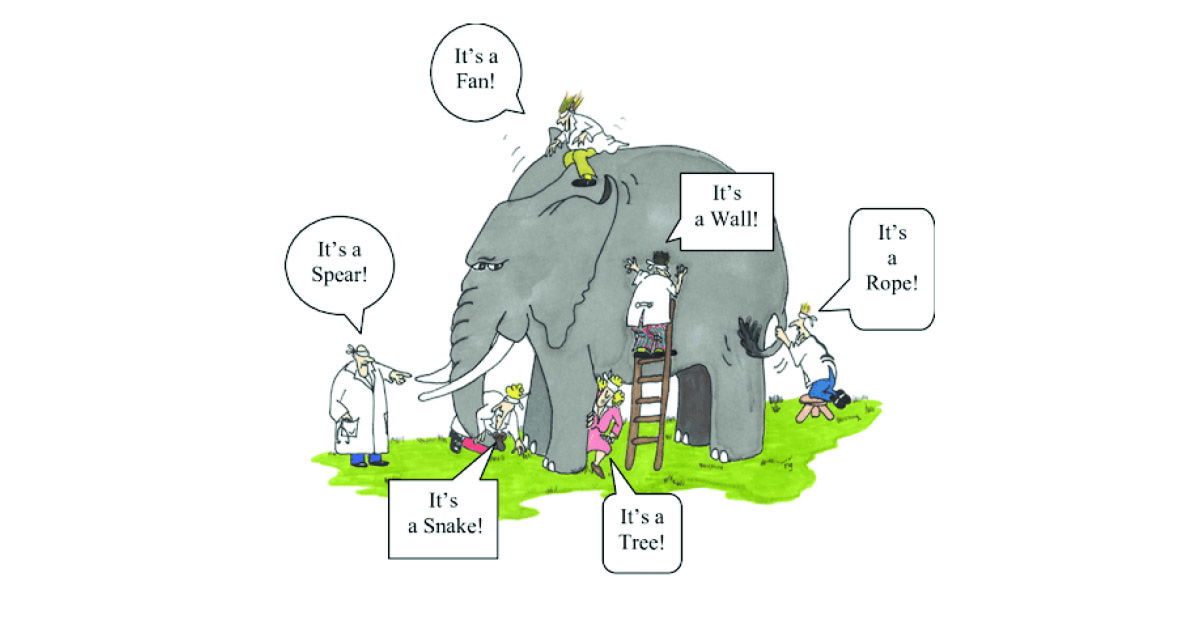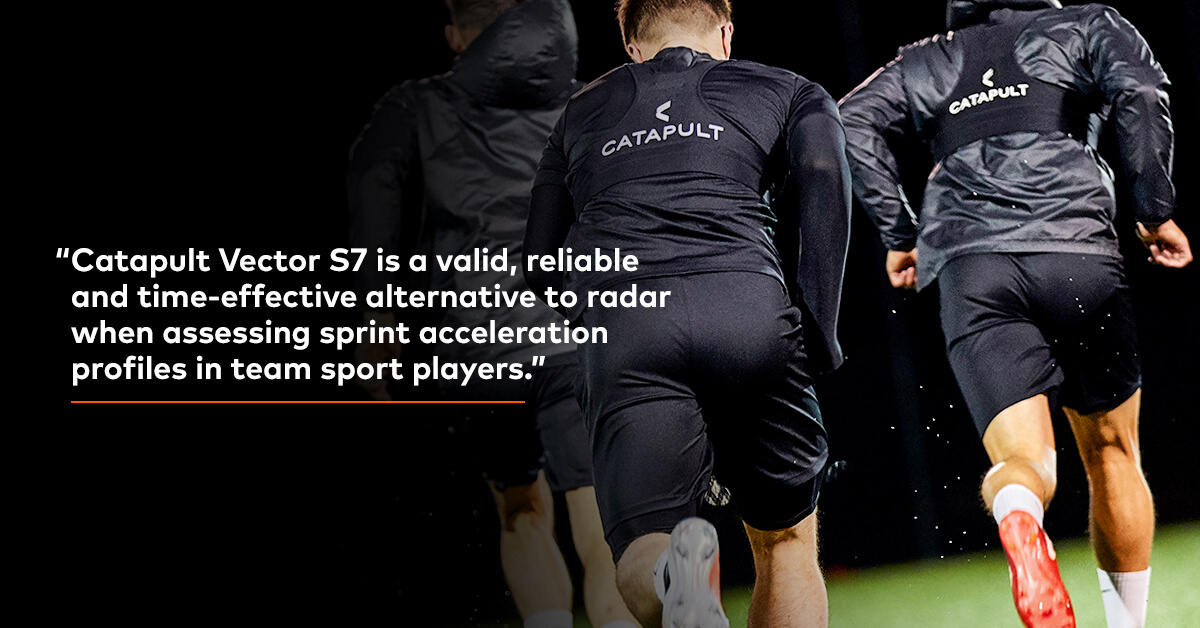Why evolving from a ‘fitter, faster, stronger’ mentality could be the next great competitive advantage in football
For a long time now, several football coaches and coordinators have followed the mantra: fitter, faster, stronger. This has led to a number of strength coaches, in particular, leading with a ‘ground and pound’ approach which sees an athlete’s physical development as the most important way to improve performance.
This ‘ground and pound’ approach has led to success in many instances but it often fails to explain how teams without physical ‘athletic freaks’ like Christian McCaffrey, Saquon Barkley, and Khalil Mack achieve success on the field.
The issue with Fitter, Faster, Stronger
Recruiting athletic and physical athletes is one-way football coaches and teams can achieve a competitive advantage. But what happens if those ‘athletic freaks’ suffer a long-term injury or they simply lose their physical qualities either as they get older or as other athletes copy their training methods and strength programs to mitigate the advantage your athletes once had?
Well … one football expert has called for teams to adopt a high-performance philosophy that considers far more avenues of competitive advantages, including strength and conditioning, but not just this approach alone.
One of the first teams to adopt a high-performance approach, and therefore, leading the way across both NFL and NCAA football is the Wake Forest Demon Deacons. Since the NCAA Division team adopted a high-performance philosophy, they achieved bowl eligibility for 6 straight seasons, started the 2020 season 8-0, and more recently became ACC Atlantic 2021 Division Champions.
Wake Forest Head Coach Dave Clawson has been credited for much of this success with many citing his ‘Moneyball’ approach, baseball’s version of high-performance. Clawson told ESPN back in November 2021: “We can’t take lesser talent and win the race … so we had to change the race.”
How the Wake Forest Demon Deacons ‘Changed the Race’
Clawson joined the Demon Deacons back in 2014 and throughout that time, the progressive head coach has amended his footballing philosophy multiple times. But one decision that has been instrumental in the team’s recent success has been the hiring of Director of Integrated High-Performance for Football Jason George.
At the time, George’s hiring was met with many questions, not because George lacked experience but because the position of Integrated High-Performance was a novel and original role yet to be seen across notable NFL and NCAA football teams.
Today, George is in his 30th season – prior to his time at Wake Forest, the Director of Integrated High-Performance enjoyed an 11-year S&C-centered career with various NFL teams, including the Houston Texans, Jacksonville Jaguars, and the Denver Broncos.
It is clear to see George is a vastly experienced practitioner. So this begs the question, what does a 30-season practitioner know about a new, modern approach: high-performance, sports science, data, and technology?
Because of his vast experience, those who do not know George often wrongly assume he is stuck in his ways and very much a fitter, faster, stronger’ mantra follower. But this couldn’t be further from the truth…
Insights behind high-performance and 30-season coach
Recently, George joined Catapult to present: ‘Understanding the Role of High-Performance in American Football’ to help coaches much less experienced than himself follow in his footsteps by adopting high-performance, gaining a competitive advantage in the process.
Watch George’s presentation here:
In this presentation, George shared three key insights for those looking to adopt high-performance:
#1 Four Parameters for Athletic Performance
George shared four parameters that practitioners need to be aware of in order to develop their program’s goals and a unified approach across the many different departments seen in a football organization. In doing so, coaches can move away from solely using the fitter, faster, stronger mantra.
Four Parameters:
- Physical
- Technical
- Tactical
- Mental
“No single parameter supersedes any other, they are equally important in the realm of high-performance. In fact, they intersect and overlap,” said George.
How the parameters overlap:

“Allowing yourself to adopt a multi-parameter (or high-performance) philosophy, then sets you up to develop considered goals which different football departments can align on,” said George.
Using this approach, George has gained a seat at the decision-making table with Head Coach Clawson. Together, they have developed their overarching goals at Wake Forest.
Wake Forest Football Program Goals:
- Develop a unified philosophy.
- Improve communication.
- Assure goal alignment across departments.
- Use data to measure our outcomes.
#2 Communication for integrated insights
Once you’ve developed your overarching goals, you then have to bring people onboard and follow that vision.
“Football is a people business and will continue to remain that way … there are many levels of communication within a football organization, so it is paramount that you are acutely aware of who to and how to communicate with all the stakeholders in your organization,” said George.
| George’s High-Performance Interactions: | ||
| Primary communication | Secondary communication | |
| Persona/ department | Football coaching staff | Recruiting |
| Sports medicine / athletic training | Video personnel | |
| Strength and Conditioning | Equipment staff | |
| Sports Science | Athletic dept administration | |
| Nutrition | Compliance | |
| Sports Psychology | Academic support | |
| Faculty / student groups | ||
Despite being a secondary communication stakeholder, “my discussions with the program’s video personnel are becoming more prevalent … it’s because the next development of high-performance in football is the integration of athletes’ data with their video,” said George.
“Football has long been associated with video film and analysing such to improve performance, but now we’re getting closer to our video team in order to see the context behind our data and performances.”
Discover what integrated data + video looks like for soccer and rugby, football coming soon for football:
→ Click here to arrange a free demo, today.
#3 Perspective and analogies to get through to your coaches
The Director of Integrated High-Performance closed his presentation out by sharing that a strategy and understanding the nuances of communication in a football program is only effective if you can get through to your head coaches. George rhetorically asked: “Have you got a seat at the table?”
Throughout this part of his discussion, George shared John Godfrey Saxe’s images from ‘The Blind Men and the Elephant’:

“We are all products of our own unique perspectives, and so, individual points of view may not be wrong but they can be incomplete. The more ways we can look at a problem the better solution we can develop,” said George.
***If you’re interested in reading about this subject of perspective, George suggested the audience should read Range: How Generalists Triumph in a Specialized World. Click this link to buy a version of the book from Amazon: US; UK; AUS.
But back to the context of football.
“Sports scientists have a specialist role in a football program. Put very simply, sports science is the use of data to drive decision-making both on- and off-field,” said George.
“This sentiment does not, however, mean that sports science replaces coaches … very much the opposite. Going back to our parameters, it intersects with the art of coaching and a practitioner’s experience and perspective.”
In football, sports science “has a bad name, as many think it is going to undermine the experience they have built up over the years. To ensure it works in this way and not against you as a coach, you have to use valid and reliable technologies.”

→ To discover “Why GPS technology is a valid and reliable measure,” click here to read our breakdown of the latest research from the International Journal of Sports Physiology and Performance.
In addition to valid and reliable technologies, George also suggested practitioners use analogies, since athlete monitoring-derived data can be new to some coaches.
“Analogies enable you to take a topic unknown to a coach and match that with something they can understand,” said George.
“In a sense you create familiarization, and in my experience, that is the best way to get through to your coaches so you can use data and high-performance parameters to truly improve the performance of your team.”
→ To improve your team using data and high-performance parameters, click here to speak to the Catapult team.
Latest: XFL Inks League-Wide Deal with Catapult
The XFL has secured a cutting-edge partnership with Catapult, a leader in athlete performance and safety technology.
With this league-wide agreement, the XFL will now have access to Catapult’s Vector, Thunder, and Scout solutions, enabling teams to make informed decisions about players and optimize player health and performance.
This partnership will provide coaches and staff with 360-degree technology for measuring players, tracking performance, and presenting film, making the XFL a leader in the future of football and player safety in 2023.
→ Click here to learn more about XFL’s League-Wide Agreement.